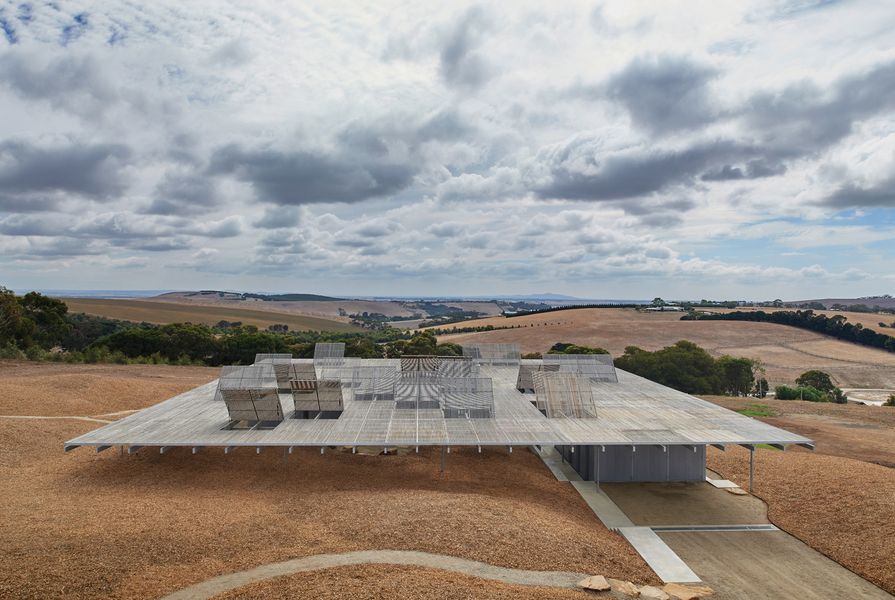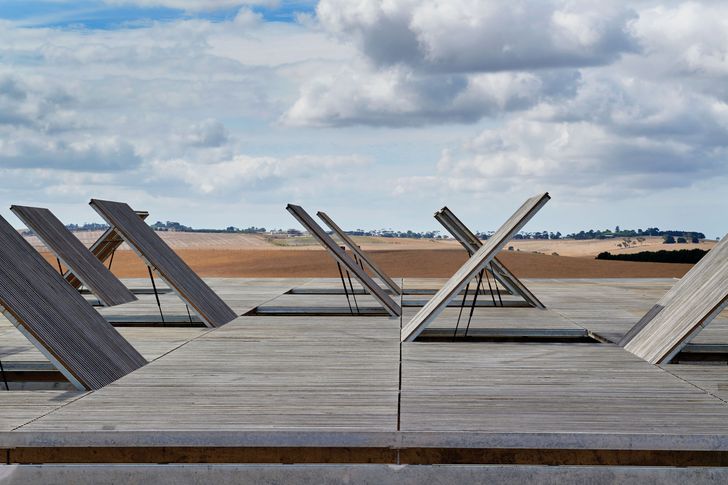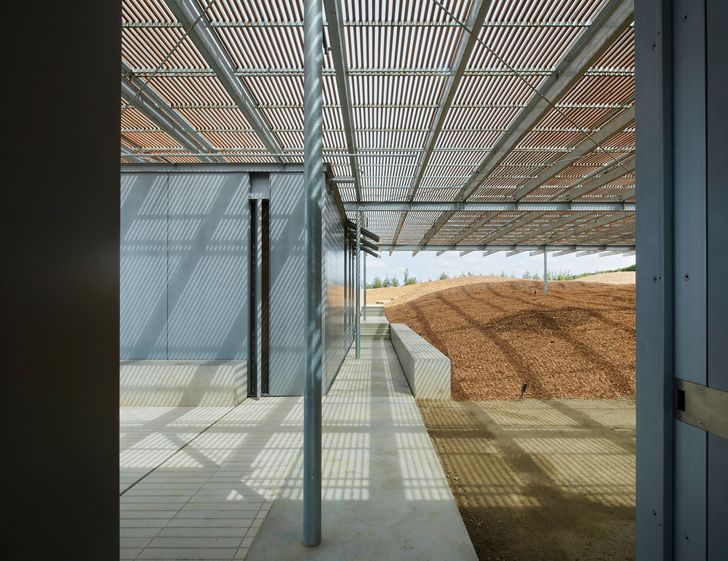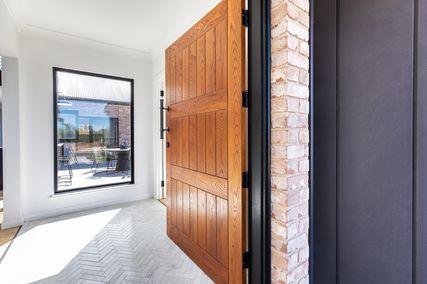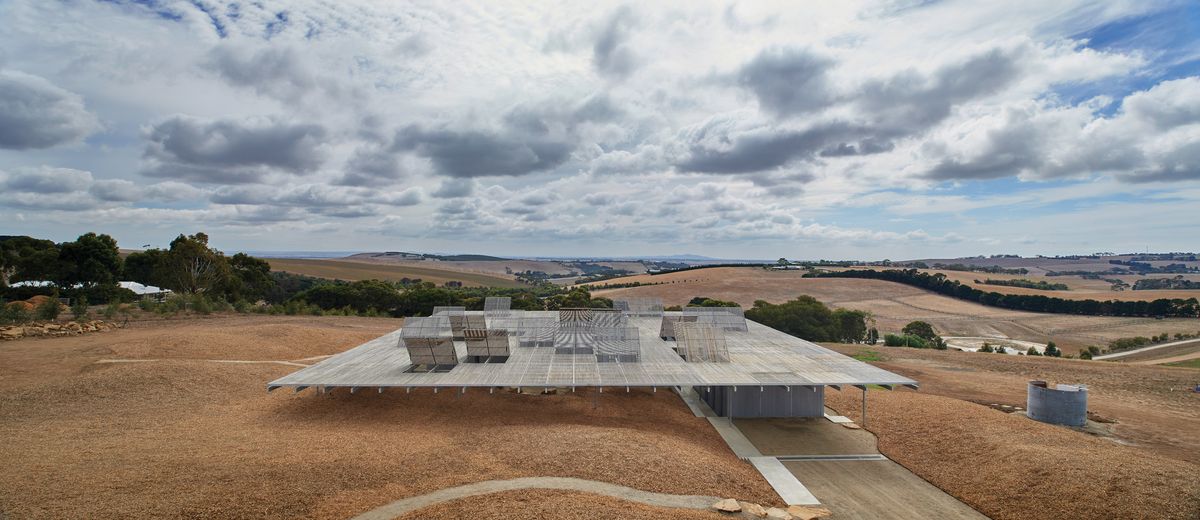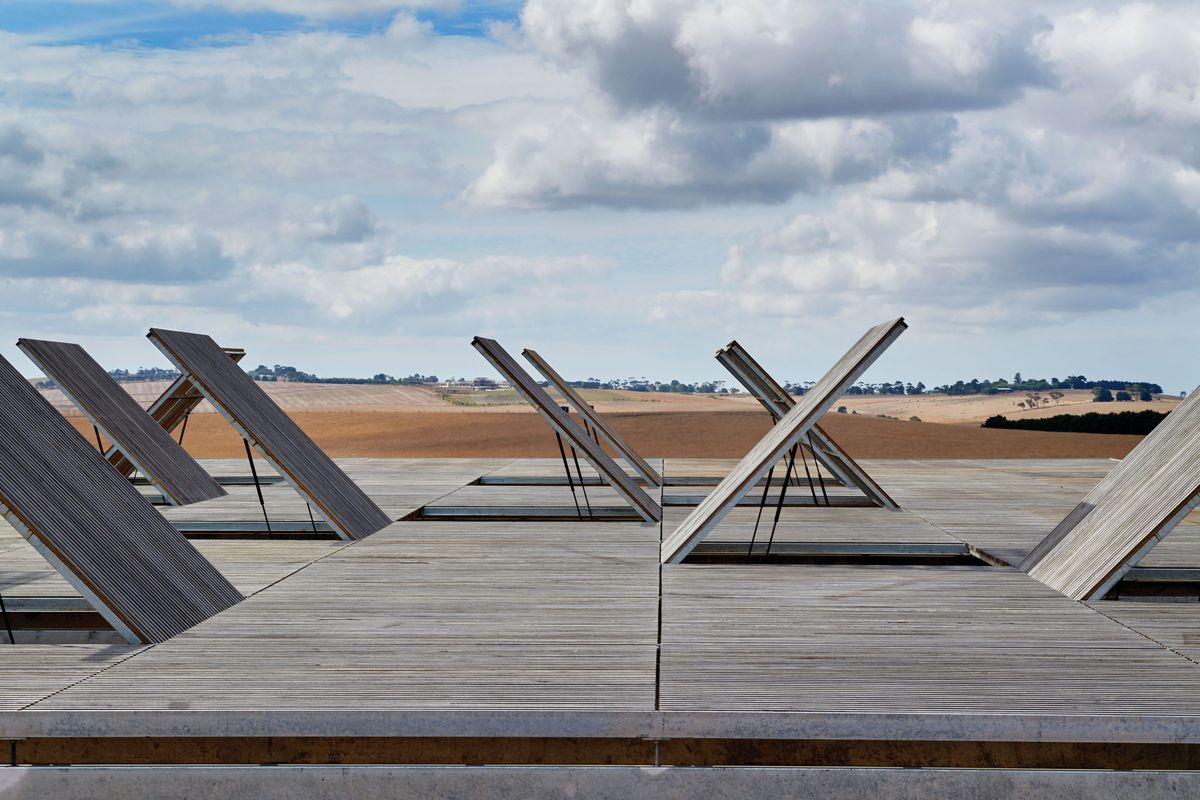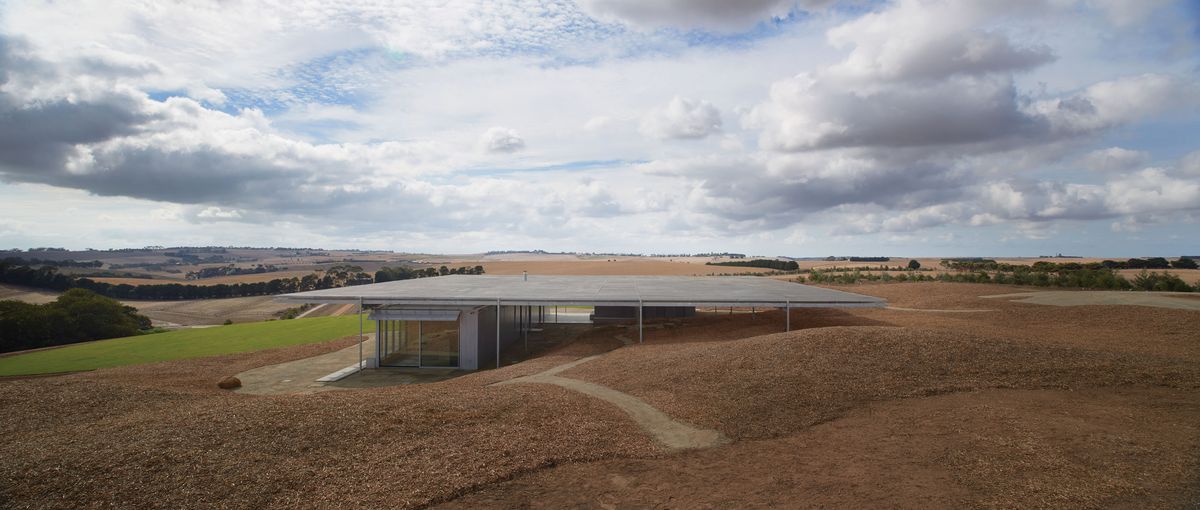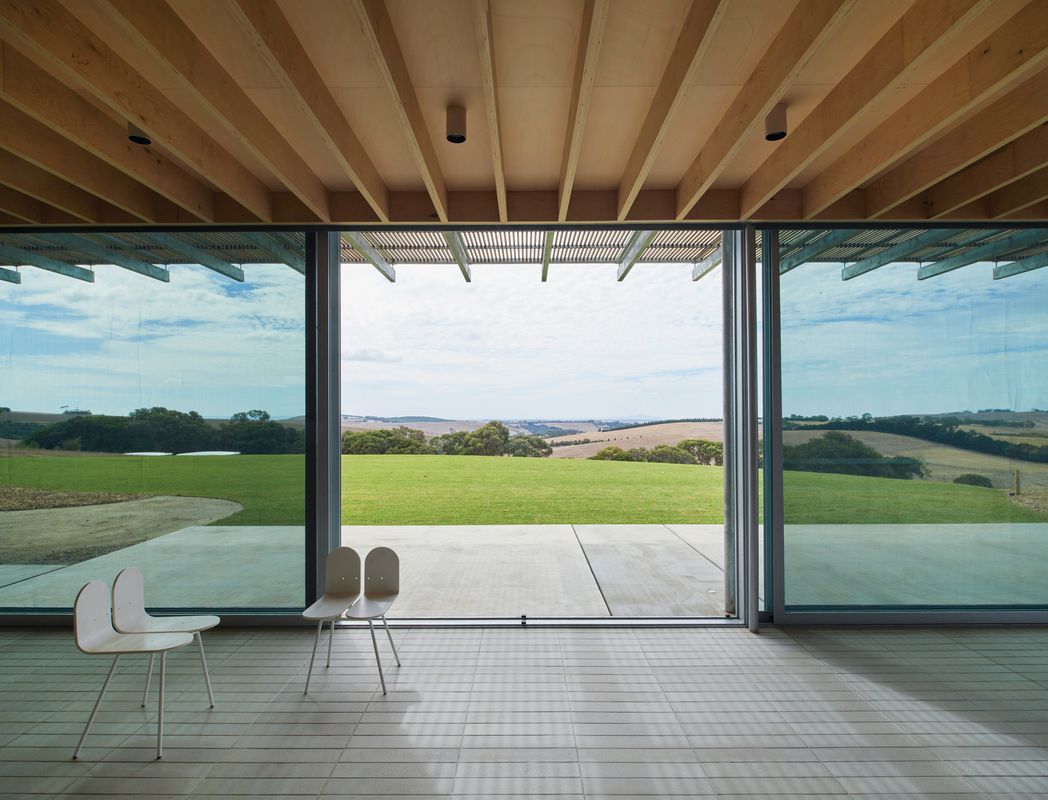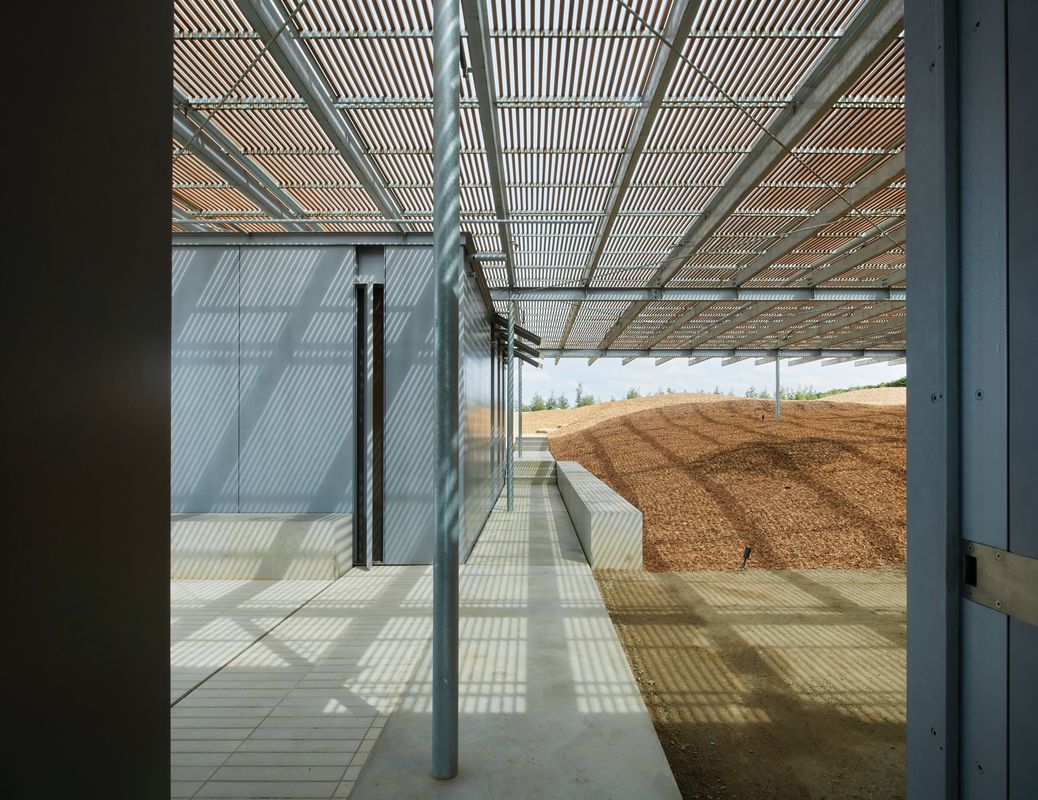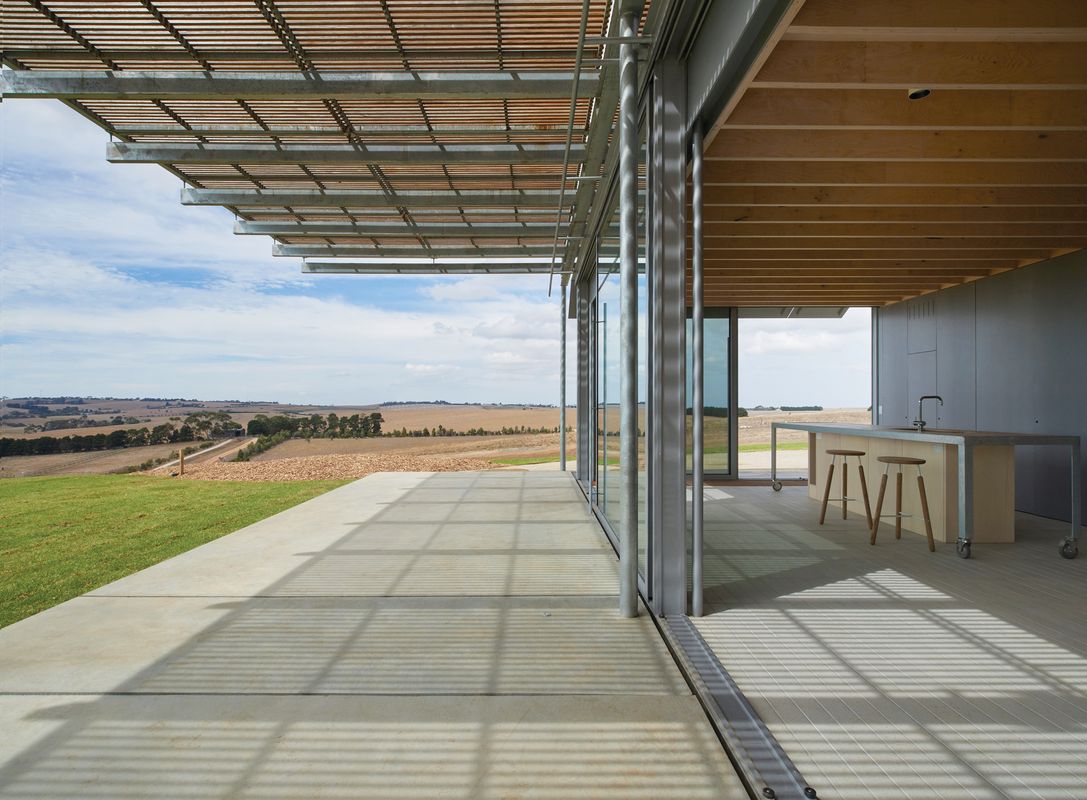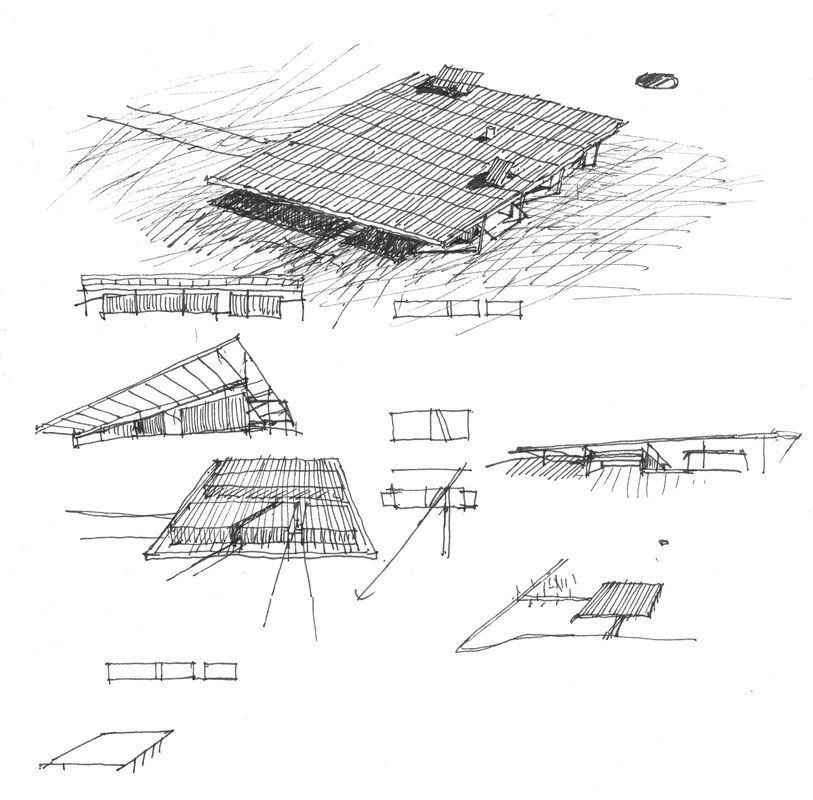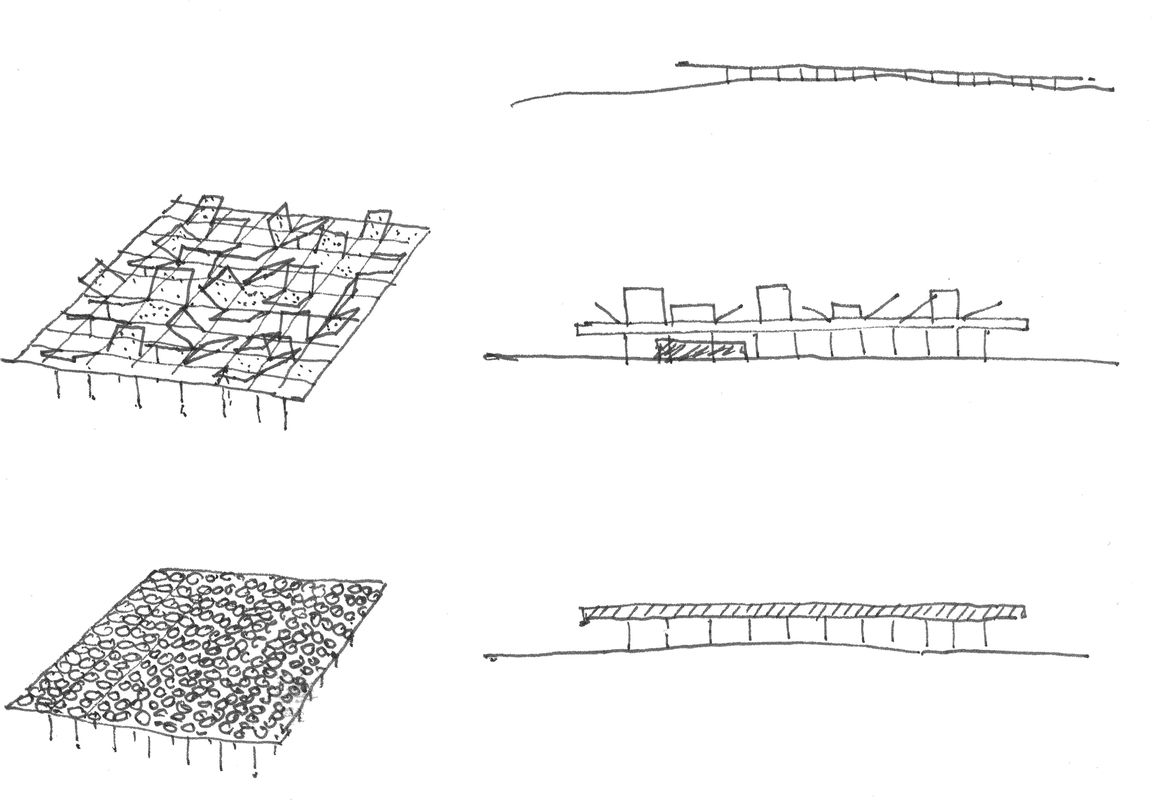It is the elegance of nature that creates even the appearance of simplicity. — Marilynne Robinson1
What Sean Godsell Architects has done in House in the Hills is of the utmost importance. Its physical and phenomenal clarity make it architectural poetry, while providing the kind of stability and rejuvenation that is much needed today – in architecture and beyond. In today’s world of practice, this consistency of endeavour and leading with architecture is both constructive and communal.
The appearance of simplicity is created primarily by the parasol structure: a completely rectilinear grid steel structure of three bays running north–south and four bays running east–west, with north and south cantilevers and operable panels. This parasol, which is totally covered in a layer of equally spaced timber shade battens, is the primary visual and structural reference against which the “house” parts take their place and offer their potential – and their protected-ness – to the landscape and the inhabitants. It has a qualitative, delicate and light-permeated presence. It is a repeated, geometric and proportioned architectural ordering on a classic undulating Australian landscape. On the entry side, it is almost low enough to climb onto, while on the living side, it concretizes the parallel planes of ground and shade.
The parasol’s independence from the “house” elements gives grandeur, scale, purity and an uncommon gentleness to the building. You are always under the parasol in this house. And wherever you are under the parasol, the points of its structural columns, the lines of its beams and battens, and the planes of its spare walls gently guide and hold you, both inside and out. The walls lead you through the order, allowing you to pass through only where the order prescribes. This stability and clarity are good where the landscape is this big.
A layer of timber battens running north—south forms a 30-by-30-metre parasol above the house, punctuated by a series of operable panels.
Image: Earl Carter
Sean Godsell Architects’ rectilinearity is not pragmatic nor is it simply functional. Briefs are never as well ordered – nor as proportioned – as these works require, as any work requires. This order requires an architect to see into the true nature and potential of architecture. This ordering, this prescriptive regularity, is about life, place, society and environment. It is demonstrative of the possibilities of our correspondence with these things. It is not so much about enclosure nor even space – space is always going to be difficult in a place as expansive and ancient as Australia – it is more that the walls and windows gather, and you find yourself with respect to this gathering. When you go “outside” it is simply that there is only one plane (wall) at play and the lines (beams) and points (columns) constitute the order. Being “inside” simply means that there are enough walls to go around.
This house has been fully “architected.” The full range of architectural tools has been studied, referenced and cross-referenced in the building: Proportion, Order, Structure, Space, Light, Materials and Character. All of these are clearly in evidence and their presence makes this a work of total architecture in a way that much current work is not. Their operative inclusion means you sense that this house knows what it wants to do and why it is doing it. It is not merely gathering currency, although it surely knows the manner of its time. The best architecture responds purely to each place and brief, and also illuminates its potential. But this building is not offered as an answer. This house is truly propositional, as all architecture should be. The limits and the opportunities of rectilinear order are displayed; curves and diagonals are for you to consider. The respect and the prejudices of a limited material palette are felt; lavishness is a different way of being. The purity and the exclusiveness of a limited and repeated order are experienced as if you are one of the members of the house. It prompts you for your opinion and your input. Here, your consciousness and sensitivities are addressed – rewarded or questioned – not denied.
The parasol helps to deflect the prevailing wind as well as offering varying degrees of shade and direct sunlight, depending on the time of day and year.
Image: Earl Carter
This building could be called severe; however, its calm and direct manner really deserves a more positive adjective. You can be in no doubt that it is “made” and not part of the indigenous landscape, although time is needed for the site to grow and attain its own life, to allow a fullness to emerge. Its correspondence with the landscape is one of Western reference, and the site has similarly been “made.” I’m not sure that this strictly rectilinear geometry can differentiate an indigenous landscape, and this rectilinearity does join it to Western/colonial interventions. Significantly, the house is not about form. It is certainly about light and shade – it is crucial that the parasol battens run north–south – and as such, our experience of the house is constituted by pattern and position. This purity and poetic deliverance are worthy, and essential, to the manner of the house and our inhabited correspondence with it. If one wants to achieve such an architectural reality, it must be well built. This project is well built, a rarity today that is lamentable for both architects and builders. And full marks to the clients, too, who shouldn’t have to be, or feel, so brave. This house has dedication and conviction, knowledge and ability, intent and respect.
The consistency of the structure, its unwavering geometric order and the subordinate directness of the material choices draw purely on the great expanse of architecture’s roots. They liberate the house from mere function or self-interest and elevate architecture to an elegance that is poetic, experienced as a rich and hierarchic simplicity. Points, lines and planes come together in a way that allows us to feel both our singular identity and our place in the world around us. They, of course, literally build a house, but a house that is at one with the wider landscape rather than one that encloses you from it. The house puts me in mind of a quote from Marilynne Robinson:
What we experience as physical reality is profoundly untypical of physical reality. Human experience is the central factor here. We can know that we are part and parcel of the universe at large, that great storm of energy … Einstein said that time is man’s most persistent illusion. With all respect, I would suggest that our great illusion is in fact stasis, solidity. Time flows one way, gravity is much weaker than it ought to be – existence as we know it depends entirely on these anomalies … We look out at the collisions of galaxies and are amazed. We should be more amazed that our cities stand, our bodies pass through maturity and aging, our selves are rooted in and derive from a past that cannot be evaded and is nowhere to be found.2
Works such as this have the ability to make us aware of the stasis and change that surround us, and the time we are in and the future we cannot avoid.
House in the Hills is built on the land of the Wathaurong people of the Kulin nation.
1. Marilynne Robinson, The givenness of things: Essays (USA: Farrar, Straus and Giroux, 2015), 13.
2. Marilynne Robinson, The givenness of things: Essays, 229–231.
Credits
- Project
- House in the Hills
- Architect
- Sean Godsell Architects
Melbourne, Vic, Australia
- Project Team
- Sean Godsell (project director), Hayley Franklin (project architect)
- Consultants
-
Builder
Poulsen Builders
Building surveyor Nelson McDermott
ESD consultant Greensphere Consulting
Engineer Perrett Simpson
Landscape consultant Eckersley Garden Architecture
Quantity surveyor Plan Cost Australia
- Site Details
-
Location
Surf Coast,
Vic,
Australia
- Project Details
-
Status
Built
Category Residential
Type New houses
Source

Project
Published online: 30 Apr 2020
Words:
Des Smith
Images:
Earl Carter
Issue
Architecture Australia, March 2020

